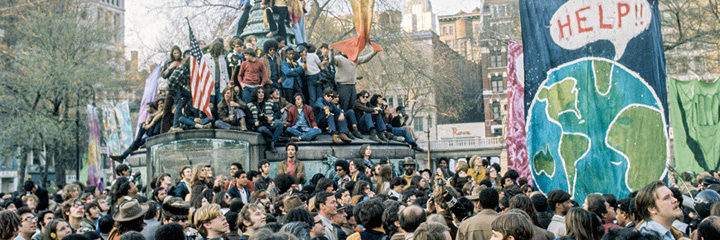Twenty million Americans took to the streets to celebrate the very first Earth Day 50 years ago. We may not have been able to gather the masses together for Earth Day this year, but that doesn't mean that our staff didn't find some creative ways to have fun at home.
Reduce, REUSE, Recycle
Is there a child alive who came out of schools systems in the 1980s and 1990s school system who doesn't know of the 3 Rs? Reduce, reuse, recycle.
In any case, a lot of our staff came up with creative ways to reuse all kinds of materials to create drip irrigation systems, raised beds, and even watercolors! Take a look:
Drip Irrigation System
If you've ever wondered how to make a drip irrigation system with a plastic bottle, you've come to the right place. This is a super simple and cheap way to make sure that your plants get the water they need to thrive.
Here's what you need:
- Scissors
- Push pin
- Jug/bottle
Steps:
- Prick 3 or 4 small holes in the cap of the plastic jug.
- Cut the bottom inch or so off the bottom of the plastic jug.
- Plant the jug in the soil or pot and fill with water.
How to Make DIY Watercolor Paint
Who would have thought that flower petals, coffee grounds, kale, and ground tumeric could create such beautiful watercolor paints!
Here's what you need:
- 2 Tbsp of ground tumeric
- 2 Tbsp of finely chopped kale (or other dark, leafy greens, like spinach)
- 2 Tbsp of finely chopped flower petals (the darker the petals, the more rich the results)
- 2 Tbsp of ground coffee beans or black tea
Optional:
- Honey
- Cheesecloth or coffee filters
Steps:
- Place the tumeric in a small dish and add 1-2 Tbsp of boiling water.
- Steep for 10-20 minutes.
- Repeat with the other ingredients.
- Optional: add a drop of honey to each dish. Honey helps the color stick to the page better.
- Optional: Strain the mixtures into individual containers using cheese cloth or coffee filters. Once most of the mixture has seeped through, squeeze out any remaining liquid. If you don't mind grainy watercolors, feel free to skip this step!
- Start painting! Thicker paper (like card stock) is recommended. If you don't have thick paper, just allow time for your paints to dry before layering color on.
Pro tip: the less amount of water you put in and the more you let things steep, the richer the watercolor will be!
Find a Movement Gym near you.

